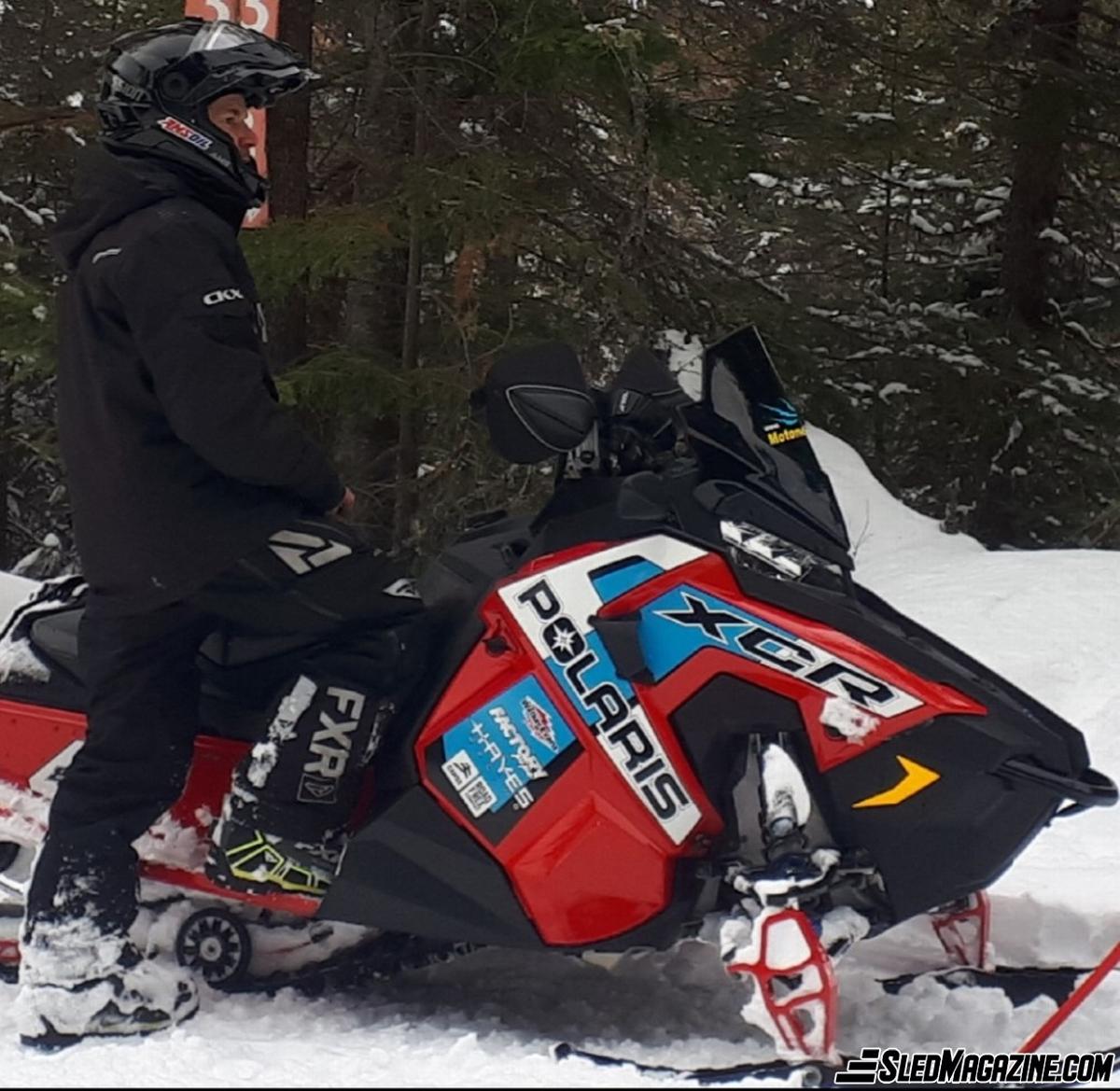It’s time to take stock of the season in terms of my impressions of the 2020 XCR 800 long-term trial. As mentioned in my first articles, the trail performance fan will be delighted with the XCR package offered by Polaris.
Here are the highlights of the pros and cons. It’s not out of bias that I’m convinced that this is the most enjoyable sled I’ve ever had the opportunity to try. Whether it’s in terms of engine/pulley performance or sporty driving pleasure, the features of this XCR ensure that no matter what the conditions, you’ll come back enchanted from a ride.
During the season, the only element changed aftermarket was the original runners by those which Qualipièces manufactures, the HC P08-286-08 (see photo 3), for an even more aggressive driving style. The machine is stable at low, medium and high speeds and is always ready to swallow the bumps even though this type of sled is usually stiff and less comfortable than a smaller series in the range such as the INDY XC in this case. The flexibility of the suspensions, as well as the opportunity to spread the skis an additional two inches, ensure a logical link to the reality of Quebec’s trails. However, the buyer will have to consider an element noticed on the PRO CC rear suspension. If I can allow myself a correlation with the “new engine and suspension” running in, I believe that the behaviour of a suspension varies during its usage. So once the first 1,000 km to 1,500 km have been covered, the XCR’s rear suspension becomes more flexible. This sled comes out of the factory with the softest torsion springs of the three types offered by Polaris (dealer option). Weighing 145 lbs, I found that on deteriorated trails with the compression and transfer block adjustments at maximum, the rear suspension was a bit soft. I suggest intermediate and perhaps the stiffest (HD) springs for those riding with two adults (check with your dealer). The robust Walker Evans Velocity 2.0 shock absorbers do an excellent job. However, they are not obvious to adjust and understand because there is no rebound adjustment.

Apart from these points, I have benefited from and appreciated the whole of the Polaris work. You really have to try it out to realize that this machine is pretty close to the best there is. The autonomy is acceptable both in oil and fuel consumption for an 800 cc 2-stroke. Comparatively, over 100 km, the 800 cc Cleanfire uses about two litres more than the 850 Patriot. Equipped with an optional (snowcheck) Ice Ripper XT 1.25 track as well as a mid-height windshield, the INDY XCR is well adapted to the different terrains of our vast territory. The noise level of the mechanical components in action is subject to vibration, but suitable for 500-600 km daily rides. Ergonomics facilitate attacking and different driving positions. In addition, the heated handles are efficient, and I found the seat comfortable.

The steering is so precise that you never get tired of pushing this baby around bends. The Race brake system is awesome and powerful. No matter the transfers, they remain fluid, smooth and perceptible thanks to the AXYS chassis. The machine is focused on the whole of the sensations linked to the rider. Whether your style is sinking or standing tall and ready to pounce, the 129” POLARIS INDY XRC won’t leave you wanting for more. Of course, it’s the brand’s high-performance model, and I must admit that I could make do with the more basic INDY XC 129 with intermediate torsion springs or the 137-inch version.
Nevertheless, this version stands out from everything else, and I would be the first to buy it as I loved it so much. It’s hard to beat! It would have been nice for the 2021 lineup if the XCR PRO CC layout had come out in 137” for even more bumpy trail capacity and braking efficiency. However, the arrival of the VR1 MATRYX 2021 is a nice novelty, and it would not be surprising to see the XCR appear in this setup for 2022!
Thank you to Polaris Industries as well as RPM RIVE-SUD (LÉVIS), without which it would not be possible to share these impressions with you.


